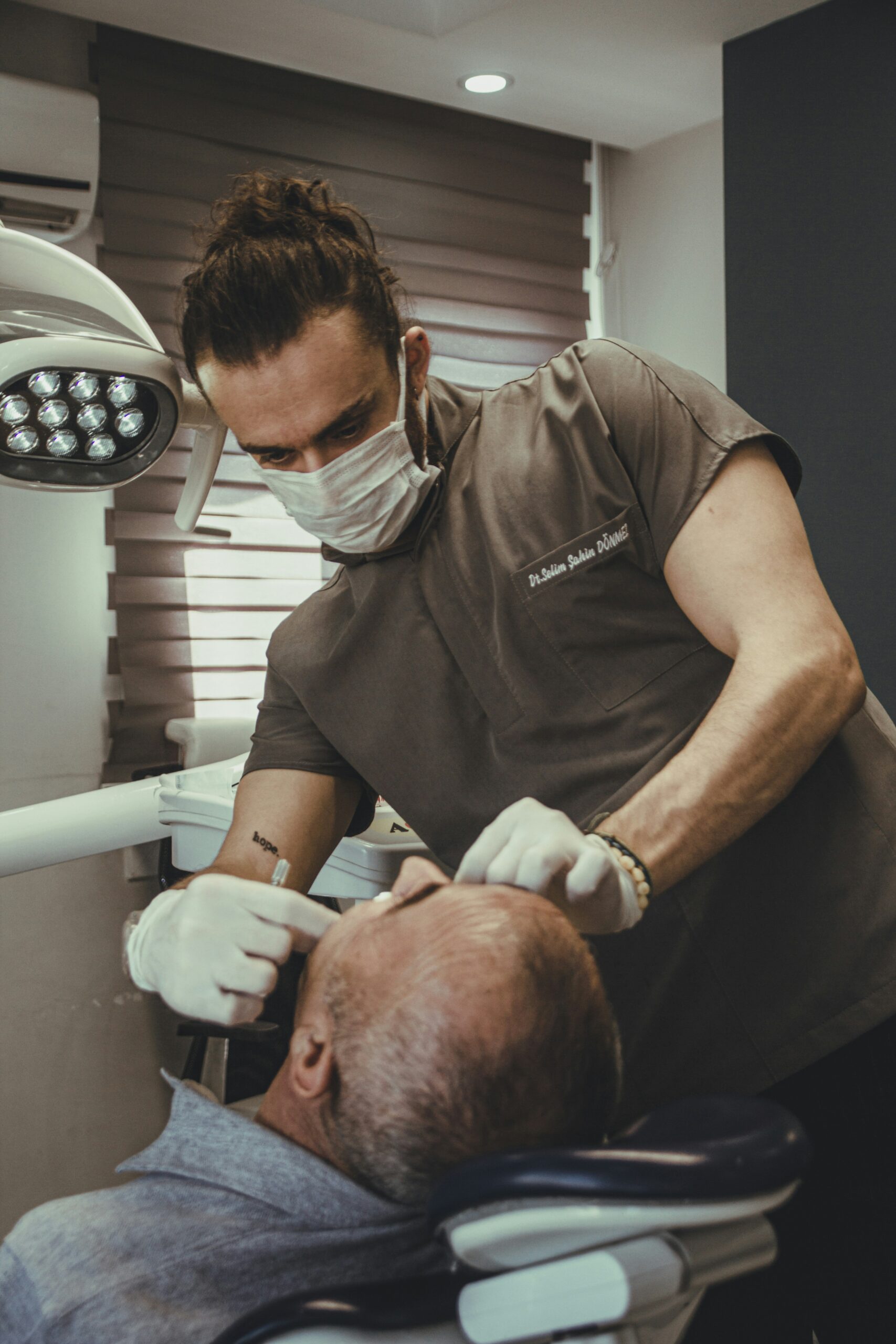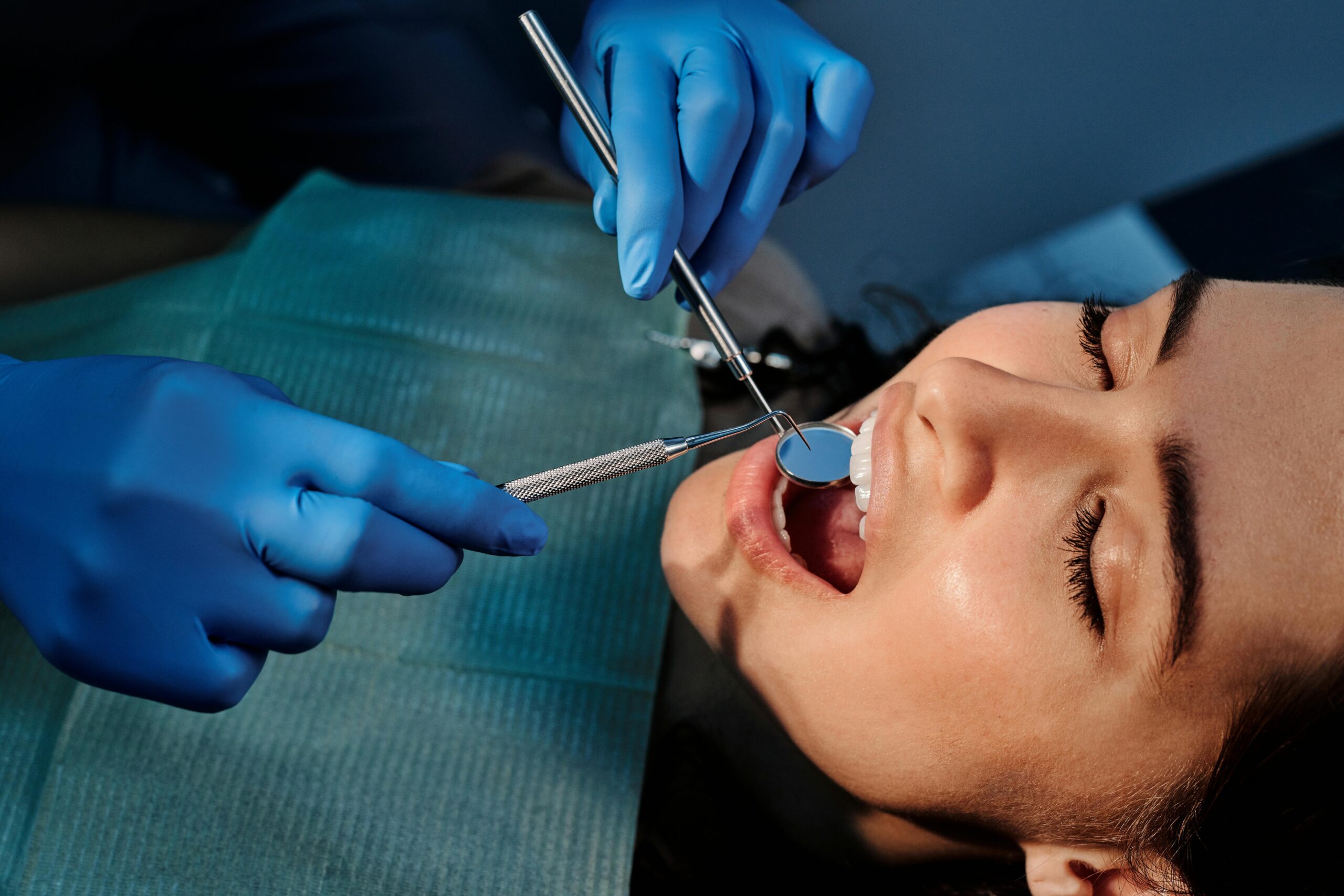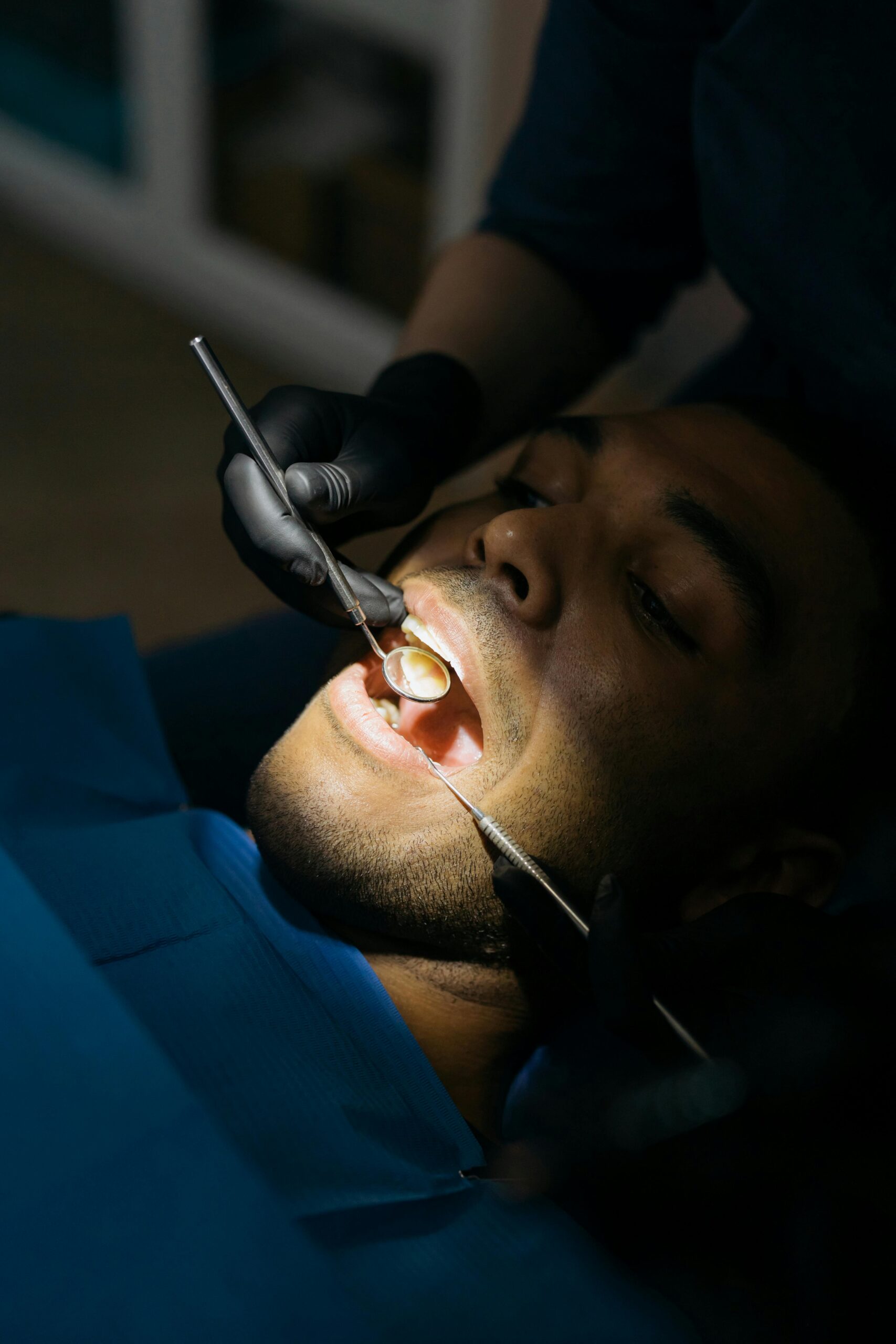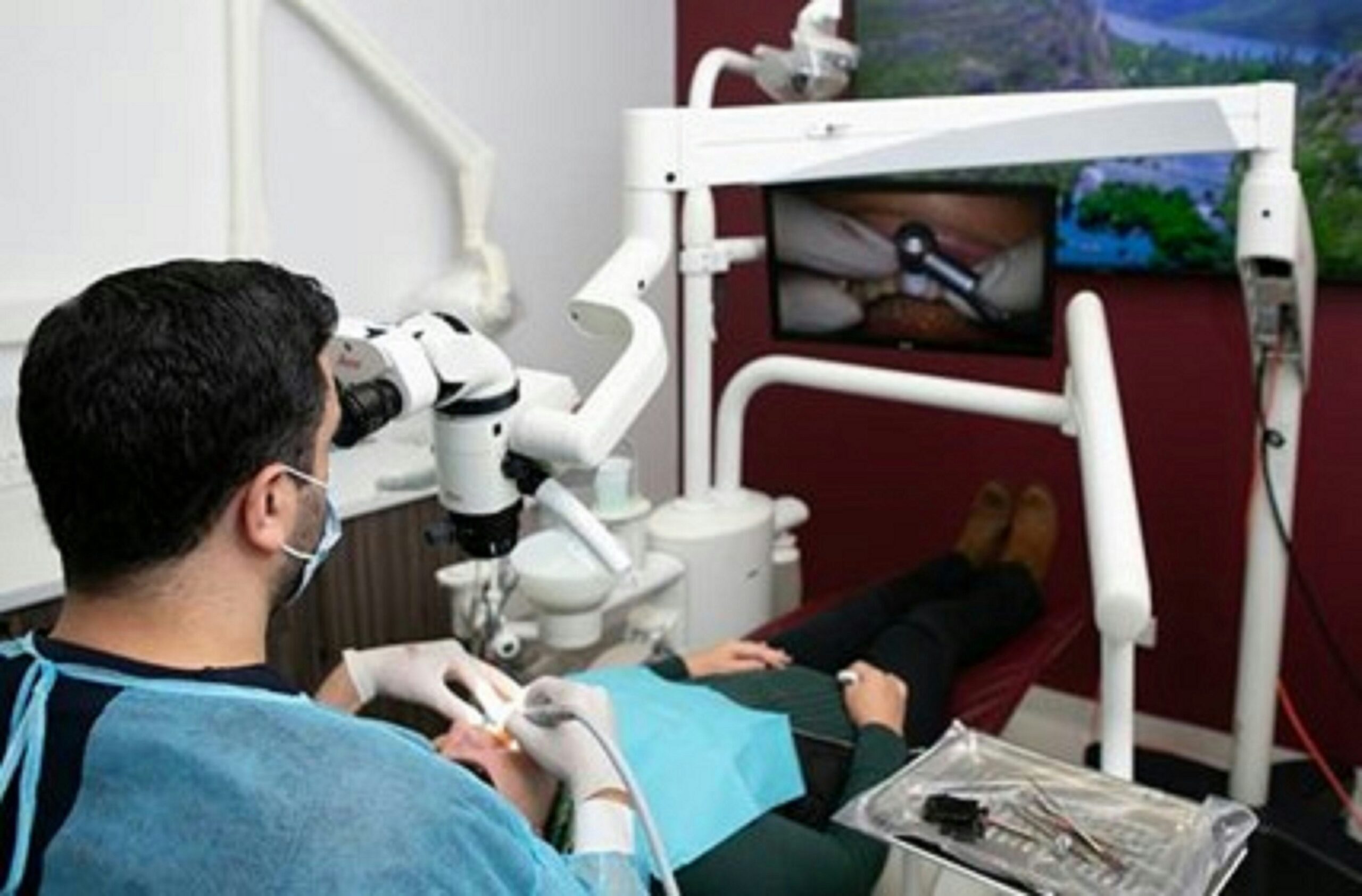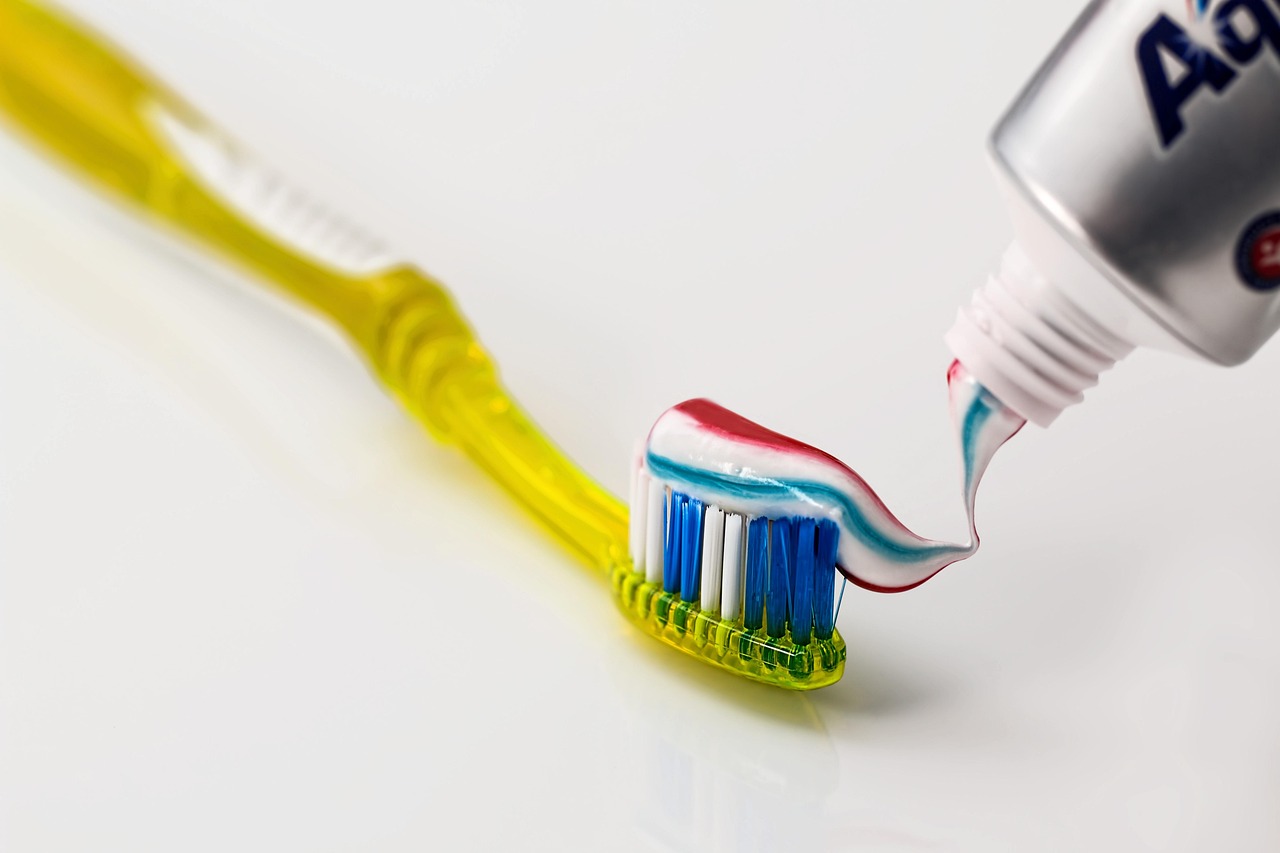Understanding General Anesthesia
General anesthesia is a controlled, reversible state where you are fully asleep, feel no pain, and remember nothing from the procedure. In dentistry, it is used for select situations when routine numbing or lighter sedation is not enough, and it requires hospital-level safety standards. Because it affects breathing and reflexes, a specially trained anesthesia team monitors you the entire time. This is why we are strict about when and where it is offered.
Under general anesthesia, medications are given through a vein and sometimes through a breathing mask or tube. Your heart rate, blood pressure, oxygen level, and breathing are tracked continuously with advanced equipment. Airway support is planned ahead of time, and recovery is supervised until you are awake, stable, and safe to go home with an adult escort. General anesthesia in a dental office is uncommon; most cases are done in a hospital or surgery center that is equipped for emergencies.
When might it be considered in dentistry?
- Extensive oral surgery or multiple procedures in one visit
- Severe dental anxiety that does not respond to lighter options
- Special health needs or inability to cooperate safely
- History of difficult numbing or complex airway concerns
For many patients, lighter options work well and carry fewer risks. Examples include anxiolysis with a pill and local numbing, which we discuss on our page about comfortable, step-wise oral sedation for dental care. These approaches let you stay awake but relaxed, with faster recovery and no breathing tube.
Some procedures may benefit from deeper medication levels without full anesthesia. Monitored deep sedation—provided by qualified clinicians with the right monitors and airway tools—can allow you to “sleep” through treatment while still breathing on your own. Learn more about how we plan and monitor deep sedation for dental procedures.
All forms of anesthesia have risks, such as nausea, sore throat, or rare breathing problems. Careful screening (medical history, medications, and fasting), clear instructions, and the right setting help keep you safe. If general anesthesia is recommended, we will explain why, review alternatives, and choose the safest location for your specific needs.
Differences Between Office and Hospital Settings
Dental offices and hospitals are built for different levels of anesthesia care. An office can safely support routine dentistry and some sedation for healthy patients, while a hospital adds an operating room, full anesthesia staff, and instant access to advanced rescue resources. Because general anesthesia in dental office settings has narrower backup options, we reserve it for very select cases and often use a hospital when risks are higher.
In a hospital, a dedicated anesthesia team (anesthesiologist or CRNA, perioperative nurses, respiratory therapy) works in operating rooms with full monitoring, advanced airway tools, blood products, labs, and imaging within minutes. If an emergency occurs, a code team and intensive care unit are on site. In an office, we use standard monitors, emergency medications, oxygen, suction, and a defibrillator, and we plan for rapid EMS transfer if a rare event exceeds what an office can manage. The setting you see us recommend reflects these safety layers.
Patient selection also differs. Healthy adults with straightforward needs may do well with local anesthesia or moderate/deep sedation in an office. People with significant medical conditions, severe sleep apnea, difficult airways, bleeding disorders, or those needing lengthy combined procedures are better served in the hospital or an accredited surgery center. Young children who require extensive dental rehabilitation, or patients who cannot safely cooperate, may also be scheduled in the hospital so anesthesia and recovery resources match the risk. For example, some planned wisdom tooth removal can be managed with deep sedation in an office for healthy patients, but complex cases may be moved to the hospital.
Recovery expectations differ, too. Hospitals have post-anesthesia care units for extended observation and rapid consultation if nausea, airway swelling, or breathing issues arise. Offices discharge patients once standard criteria are met, with an adult escort, written instructions, and 24-hour contact plans. Finally, procedure scope matters: combining multiple surgical sites or full-arch implant work may favor a hospital or surgery center, while simpler, shorter treatments fit office-based care. When appropriate, staged care with local anesthesia or sedation remains an option, even for larger goals like full-arch implant treatment.
Importance of Strict Protocols
Strict protocols exist to keep you safe before, during, and after anesthesia. Because anesthesia can change breathing, blood pressure, and reflexes, every step must be planned and checked. Clear rules help us choose the right setting, verify equipment, and assign trained people to the right roles. Being “strict” is how we prevent problems and respond quickly if the unexpected happens, especially with general anesthesia in dental office settings.
Safety starts with screening. We review your medical history, medications, allergies, prior anesthesia experiences, and fasting status, and we assess airway risks like sleep apnea. When needed, we coordinate with your physician and choose the location—office, hospital, or surgery center—that best matches your health and the procedure. If new risks appear, we postpone or change the plan rather than push forward.
During anesthesia, standardized monitoring and roles matter. A qualified anesthesia clinician manages your airway and medications, while another team member focuses on the dental procedure. Continuous tracking of oxygen level, heart rhythm, blood pressure, and breathing (including CO₂ monitoring) is required. We keep IV access throughout, label and double-check all drugs, and pause for a “time-out” to confirm your identity, the procedure, and the plan.
Emergency readiness is part of the protocol. We maintain a stocked code cart with oxygen, suction, airway tools, reversal agents, and a defibrillator. The team rehearses drills for laryngospasm, allergic reactions, bleeding, and low blood pressure, and we have a clear path for rapid EMS activation and transfer if needed. If conditions change mid-procedure—such as airway swelling or unstable vitals—we stop, stabilize, and escalate care rather than take chances.
Recovery is guided by objective discharge criteria. You leave only when breathing, blood pressure, alertness, pain, nausea, and bleeding are controlled, and an adult escort is present. Written instructions and follow-up checks reduce after-hours risk. Often, we can meet your goals with staged care under local anesthesia or lighter sedation—for example, completing complex crowns and bridges over several visits—reserving hospital-level anesthesia for when it is truly the safer choice.
Safety Measures in Dental Anesthesia
Dental anesthesia is safest when we plan carefully, use the right monitors, and match the setting to the patient and procedure. Safety measures include thorough screening, a trained anesthesia team, reliable equipment, and clear emergency plans. Because resources differ by location, general anesthesia in dental office settings is reserved for select patients and procedures, with hospitals or surgery centers used when risks are higher.
Safety starts before the day of treatment. We review your medical history, allergies, medications, prior anesthesia experiences, and fasting status. We check airway risks such as sleep apnea and limited mouth opening, and we consider your overall health, including heart and lung conditions. When needed, we coordinate with your physician and choose the location—office, hospital, or surgery center—that best fits your health and the scope of care.
On procedure day, roles are clear. A qualified anesthesia clinician focuses on your airway and medications, while a separate provider performs the dental work. We confirm your identity and the plan with a “time-out,” label every medication, and keep IV access throughout. Continuous monitoring tracks oxygen level, heart rhythm, blood pressure, and breathing (including CO₂), with temperature checks for longer cases. Readiness to support the airway—from simple positioning to advanced devices—is planned before we begin.
Equipment and medications are checked against a written list. We maintain oxygen, suction, a bag-valve-mask, and airway tools (oral and nasal airways, and advanced devices when indicated). Emergency drugs are stocked and dated, including treatments for allergic reactions, asthma, low blood pressure, and medication reversal. The team rehearses drills for events like laryngospasm, low oxygen, or unexpected bleeding, and we have a direct path to activate EMS and transfer if a rare event exceeds office capabilities.
Recovery follows objective criteria. You leave only when breathing, blood pressure, alertness, pain, nausea, and bleeding are controlled, and an adult escort is present. You receive clear written instructions and a plan for follow-up. Often, we can meet treatment goals with local anesthesia or lighter sedation over staged visits, and we escalate to hospital-level anesthesia only when it is the safer choice for you.
Training and Qualifications Required
Offering general anesthesia in dental office settings requires advanced training, specific permits, and a team prepared for airway and emergency care. The anesthesia provider must be qualified to induce, monitor, and recover patients safely, and the operating dentist must work with a separate clinician dedicated to anesthesia. Facility, equipment, and staff training must meet standards that match the depth of anesthesia planned.
Who provides anesthesia matters. General anesthesia is delivered by a physician anesthesiologist, a certified registered nurse anesthetist working with a physician, a dentist anesthesiologist, or an oral and maxillofacial surgeon who completed hospital-based anesthesia training. Each of these paths includes years of education, supervised cases, and competency in airway management, IV medications, and rescue from deeper-than-intended sedation.
Permits and certifications are required. Dentists who provide deep sedation or general anesthesia must hold the appropriate state anesthesia permit, which is different from permits for minimal or moderate sedation. Current basic life support is mandatory for all team members; the anesthesia lead maintains advanced cardiac life support, and pediatric cases require pediatric advanced life support. These credentials are renewed regularly with hands-on courses and continuing education.
Team readiness is essential. A designated anesthesia provider focuses only on your breathing, circulation, and medications, while a separate clinician performs the dental procedure. Trained assistants monitor vital signs, document events, and help with equipment. Everyone rehearses emergency drills, including opening the airway, using a bag‑valve‑mask, recognizing low oxygen, treating allergic reactions, and activating EMS if needed.
The facility must be equipped for the level of care. Required monitors include continuous pulse oximetry, blood pressure, ECG, and capnography for deeper sedation and general anesthesia. IV access is maintained, and emergency drugs, oxygen, suction, and a defibrillator are immediately available. Safe practice also includes careful patient selection, fasting verification, medication time‑outs, and written discharge criteria. Cases with higher medical risk, complex airways, or anticipated blood loss are scheduled in a hospital or accredited surgery center so resources match the patient’s needs.
Monitoring During Anesthesia
Monitoring during anesthesia means we continuously track how your body is doing—breathing, heart rhythm, blood pressure, and oxygen—before, during, and after treatment. A trained anesthesia professional stays at your side the whole time, watching the monitors, adjusting medicines, and protecting your airway. This close watch is essential in dentistry because work inside the mouth can affect breathing.
We use the same core monitors used in operating rooms. A pulse oximeter checks your oxygen level and pulse. An ECG tracks your heart rhythm. An automatic cuff measures blood pressure at set times. Capnography measures the carbon dioxide you breathe out, which confirms that you are breathing well and that any breathing tube, if used, is in the right place. For longer cases, we also check temperature. Alarm limits are set, and the anesthesia team documents readings every few minutes so we can spot trends early and respond quickly.
Because anesthesia relaxes muscles, we plan airway support before we start. This includes proper head and jaw positioning, oxygen by mask, oral or nasal airways, and, when needed, a breathing tube. We watch your chest rise, listen for breath sounds, and track end‑tidal CO₂ on the monitor. If anything changes—like snoring, shallow breaths, or rising CO₂—the dental work pauses while the anesthesia provider fixes the airway and stabilizes you.
Clear roles make monitoring safer. A dedicated anesthesia provider focuses only on your breathing, circulation, and medications, while a separate clinician performs the dental procedure. We perform a safety “time‑out” to confirm your identity, the planned treatment, allergies, and fasting status. Emergency tools and medicines are checked and ready, and the team practices responses to laryngospasm, allergic reactions, low oxygen, and low blood pressure. Monitoring continues into recovery, and you leave only when standard discharge checks are met with an adult escort.
For general anesthesia in dental office settings, we apply these same monitoring standards, but we carefully select patients and procedures. Some cases are better done in a hospital or surgery center where advanced backup—like respiratory therapy, labs, and an intensive care team—is immediately available. For lighter sedation, we still monitor breathing and circulation, using equipment that matches the depth of sedation and your health.
Emergency Preparedness in the Office
Emergency preparedness means we plan, equip, and train for rare problems before they happen. In our office, rescue tools are ready, roles are assigned, and drills are practiced so we can act in seconds. This planning matters for any anesthesia, and it is essential if general anesthesia in dental office settings is ever considered.
Preparation starts before the visit. We screen your health, review medications and allergies, and make a patient‑specific plan, including airway considerations and where the case should happen. On the day of care, we run a brief safety check: oxygen, suction, monitors, IV access, emergency drugs, and a working defibrillator are confirmed before we begin. A dedicated anesthesia clinician manages your breathing and medications while a separate provider focuses on the dental work.
We rehearse what to do if something unexpected occurs. The team practices how to recognize and treat low oxygen, difficult breathing, allergic reactions, fainting, or sudden changes in blood pressure. During an event, the dental work stops, the airway is supported first, and medications are given as needed. One person leads the response, one documents times and treatments, and another is assigned to activate 911 if the situation requires more than an office can provide.
Clear transfer plans are in place. We keep an updated script for calling EMS, building access details, and a preferred receiving facility. If a transfer is needed, we stabilize you, send a concise summary of vital signs, treatments, and medications given, and coordinate with the hospital team. Most dental care—such as routine root canal treatment—is safely completed with local anesthesia or lighter sedation, but higher‑risk cases are scheduled in a hospital or surgery center from the start.
Recovery is also part of preparedness. You leave only when breathing, alertness, pain, nausea, and bleeding are controlled and an adult escort is present. You receive written instructions and a plan for follow‑up. For non‑urgent questions, you can check our current hours. Preparedness is not about fear—it is about quiet, practiced steps that protect you if the unexpected happens.
Patient Eligibility for General Anesthesia
Not everyone is a good candidate for general anesthesia. We consider your overall health, the complexity and length of the dental work, and whether you can be safely managed in an office or should be in a hospital. Healthy patients with a clear need and low risk may be eligible in select settings, while people with higher risks are scheduled where more backup is available.
Medical history is the starting point. We review heart and lung conditions, diabetes control, bleeding or clotting issues, neurologic disorders, past anesthesia problems, and sleep apnea. We also look at airway factors like limited mouth opening or neck movement, and we confirm fasting and medication instructions. If risks are higher—such as significant sleep apnea, unstable medical problems, difficult airway, or need for long combined procedures—the safest plan is hospital or surgery center care.
Procedure type and duration matter. Shorter, simpler treatments are usually done with local anesthesia or lighter sedation. Larger surgical cases, or those likely to cause more bleeding, swelling, or fluid shifts, often call for a secured airway and more resources. When considering general anesthesia in dental office settings, we apply strict criteria so monitoring, emergency tools, and staff skills match the possible risks.
Patient cooperation is another factor. General anesthesia may be appropriate for patients who cannot tolerate care due to severe anxiety, special needs, or movement disorders, after we discuss alternatives. Many goals can be met with stepwise approaches—like staged restorative visits or conscious sedation—so you get care safely without going fully asleep. For example, cosmetic work such as custom porcelain veneers is typically comfortable with local numbing and does not require general anesthesia.
We also consider recovery support. An adult escort is required after any anesthesia, and we plan follow-up. If pre-op evaluation suggests higher risk, we will coordinate with your physician and move the case to a hospital or accredited surgery center. Complex implant reconstruction occasionally benefits from deeper anesthesia; even then, eligibility depends on health status and setting. Some full-arch cases—such as converting to snap-in implant dentures—may be staged or performed in a hospital to optimize safety.
Informed Consent Processes
Informed consent means you understand what will be done, why it is needed, the benefits and risks, and the alternatives—then you choose whether to proceed. It is a two-way conversation and a signed document. For anesthesia, the process is more detailed because medicines can affect breathing and recovery. We take extra time so you can make a calm, informed decision.
What we cover is clear and specific. We explain the dental procedure, the planned depth of anesthesia (from minimal sedation to general anesthesia), who will provide it, and where it will occur. We describe common effects like drowsiness, nausea, sore throat, and temporary memory changes, as well as rare but serious risks such as breathing problems or allergic reactions. We also review what monitoring is used, how your airway will be managed, and how recovery and discharge will work.
Alternatives are part of every consent. Depending on your health and goals, options may include local anesthesia alone, lighter sedation, staging care over several visits, or completing treatment in a hospital or surgery center. If we discuss general anesthesia in dental office settings, we also explain why that location is or is not appropriate for your case and when a hospital offers a safer margin.
Your responsibilities and supports are reviewed. We confirm fasting instructions, which medicines to take or hold, allergies, and past anesthesia experiences. You will need an adult escort after any sedation or anesthesia, and you will receive written instructions for recovery and whom to contact with concerns. If you use an interpreter, have a legal guardian, or a medical power of attorney, we include them so consent is valid and clear.
Questions are welcome at any time. You can decline, postpone, or change your choice without pressure; consent is voluntary and revocable. If the plan must change—for example, swelling makes airway support more complex—we will pause, explain the new risks and options, and obtain updated consent before proceeding. Finally, we document the discussion, your questions, your decision, and signatures with date and time. Good consent is less about paperwork and more about shared understanding and safety.
Post-Procedure Care and Recovery
After anesthesia, expect to feel sleepy, unsteady, and forgetful for the rest of the day. An adult should take you home, stay with you, and help with meals, medications, and wound care. Do not drive, drink alcohol, use recreational substances, operate machinery, or sign legal documents for at least 24 hours. If general anesthesia in dental office settings is used, your recovery plan follows hospital-style safety checks and written instructions.
Drowsiness and mild nausea are common. Small sips of clear fluids are a good start, then soft, cool foods as tolerated. A sore throat or dry lips can happen if a breathing device was used; this usually fades within a day. Take only the medicines listed on your instruction sheet, avoid doubling up on sedatives, and use non-opioid pain relievers when appropriate unless your physician has told you otherwise.
If you had dental surgery, keep firm pressure on the site with folded gauze for 30–60 minutes, changing it only as directed. A cold pack on the cheek (15 minutes on, 15 minutes off while awake) can limit swelling during the first day. Sleep with your head elevated on two pillows the first night. Do not spit, rinse hard, or use straws for 24 hours; these actions can restart bleeding. Beginning the next day, gentle saltwater rinses may be used if they were included in your instructions. Avoid smoking or vaping for at least 48–72 hours.
Some bruising around the IV site or jaw is normal. A small amount of oozing can tint your saliva pink; steady bleeding that soaks gauze is not normal. Call us if pain is not controlled by the plan you were given, if nausea prevents fluids, or if fever, foul taste, or increasing swelling appears after the second day. Seek emergency care right away for trouble breathing, chest pain, confusion that does not improve, or bleeding you cannot control.
Plan an easy day after anesthesia and a light schedule the next. Most people return to routine activity within 24–48 hours, but recovery can be longer for bigger surgeries. We will check on you, adjust instructions if needed, and schedule follow-up to ensure healing is on track.
Addressing Patient Concerns
Your questions are welcome, and we answer them before any anesthesia is planned. We explain what will be done, why it’s needed, who will be present, and where it will happen so you know what to expect. Most dental care does not require general anesthesia, but when it does, we review benefits, risks, and alternatives in plain language. You will have time to decide, and you can change your mind at any point.
Questions often center on general anesthesia in dental office care—what it is, why it’s chosen, and how we keep you safe. A dedicated anesthesia professional stays with you the entire time, watching your breathing, heart rhythm, blood pressure, and oxygen, and adjusting medicines as needed. We discuss common worries—like “Will I wake up?” or “Could I wake during it?”—and explain that the plan is tailored to you, with airway protection and continuous monitoring to reduce those risks.
Side effects can include drowsiness, nausea, a sore throat if a breathing device is used, and temporary forgetfulness. We plan ahead for comfort with fluids, careful pain control, and anti‑nausea strategies when appropriate. You will go home the same day with written instructions and an adult escort, and we check that breathing, blood pressure, pain, and nausea are stable before discharge.
Another common concern is, “Do I really need to be fully asleep?” Often, the answer is no. Many treatments are comfortable with local numbing or lighter sedation, and we will offer those options when they are safer and effective. Cosmetic services—such as professional teeth whitening in our office—typically do not require deep sedation or general anesthesia.
Location choice also affects safety. Health conditions like significant sleep apnea, heart or lung disease, or very long combined procedures may be best done in a hospital or surgery center where backup resources are immediate. You can help by sharing your full medical history, medication list (including supplements), and any past anesthesia issues, and by asking for a walkthrough of the airway and monitoring plan. Orthodontic care such as Invisalign clear aligner treatment is performed while you’re awake, using simple comfort measures instead of anesthesia.
Benefits of General Anesthesia in Dentistry
General anesthesia can make complex dental care possible when being awake or lightly sedated is not safe or comfortable. It lets you sleep through treatment with no awareness or memory, and it allows the team to control breathing and protect the airway during longer or more invasive procedures. For select patients, this can mean finishing more work in one visit with better conditions for both comfort and precision.
Comfort is the first benefit most people notice. Patients with severe anxiety, a strong gag reflex, movement disorders, or special health needs may not tolerate care while awake. Under general anesthesia, you do not feel pain or hear the procedure, and your body remains still so delicate steps—such as impacted tooth removal or combined surgical treatments—can be done without interruption.
General anesthesia also improves control of the airway and breathing. Dentistry happens where you breathe, and surgical work can cause bleeding and swelling. With a secured airway, the anesthesia clinician can maintain oxygen levels, protect the lungs from fluids, and adjust ventilation in real time. This control reduces interruptions and can lower the risk of certain airway events during long, complex cases.
Efficiency is another benefit. When it is appropriate, multiple procedures can be combined into a single planned session, which may reduce the number of appointments, injections, and recovery periods. This approach can help patients who struggle to take time off work, caregivers coordinating transportation, or those who cannot sit through repeated visits.
Pain control is managed in layers. Even while you are asleep, we use local numbing around the teeth and jaws to reduce the amount of anesthesia medicine needed and to provide smoother recovery. Anti‑nausea and comfort strategies are planned ahead, and discharge occurs only after standard recovery checks are met with an adult escort.
Most dentistry does not require general anesthesia; many needs are met comfortably with local numbing or lighter approaches. For example, conservative treatments like careful tooth-colored dental bonding for small chips are typically done while you are awake. Because general anesthesia in dental office settings offers fewer backup resources than a hospital, we reserve it for select, lower‑risk situations and use a hospital or surgery center when added safety layers are needed.
Frequently Asked Questions
Here are quick answers to common questions people have about General Anesthesia in Dentistry: Why We’re Strict in Glendale, AZ.
- What are the main reasons for using general anesthesia in dental procedures?
General anesthesia in dentistry is primarily reserved for situations where being fully asleep is necessary for safety and comfort. This includes extensive oral surgery, cases involving severe dental anxiety, special health needs, or when a patient has a history of difficulty with numbing. It is particularly beneficial for long or complex procedures where local anesthesia or lighter sedation options would be insufficient.
- How is patient safety ensured during general anesthesia in a dental office?
Patient safety is ensured through careful screening, continuous monitoring, and emergency preparedness. All vital signs—like heart rate, blood pressure, and oxygen levels—are tracked with advanced equipment. The dental team is trained to manage any potential complications. Before anesthesia, the patient’s health history is reviewed to assess any risks, and recovery is monitored until the patient is fully awake and stable.
- Why is general anesthesia in dental offices uncommon?
General anesthesia in dental offices is uncommon because it requires significant safety measures that are usually found in hospital settings. Dental offices lack the extensive backup resources and emergency support systems present in hospitals, such as a full anesthesia staff and intensive care units. Therefore, it is reserved for select, lower-risk cases where simpler sedation isn’t enough.
- What should you expect after receiving general anesthesia for dental treatment?
Following general anesthesia, patients can expect to feel sleepy and somewhat forgetful. Nausea and a sore throat are also possible. It is recommended to rest and avoid tasks requiring skill, such as driving. An adult should accompany you home, and you should avoid alcohol and certain medications for at least 24 hours. Written recovery instructions will guide you and your caregiver through the process.
- What qualifications are needed for dental practitioners to offer general anesthesia?
Practitioners offering general anesthesia must have advanced training, appropriate permits, and be thoroughly trained in airway and emergency care management. Anesthesia is typically administered by a physician anesthesiologist, dentist anesthesiologist, or certified registered nurse anesthetist. Facilities must meet stringent equipment standards, and practitioners are required to maintain certifications for life support and continual education to ensure patient safety.

